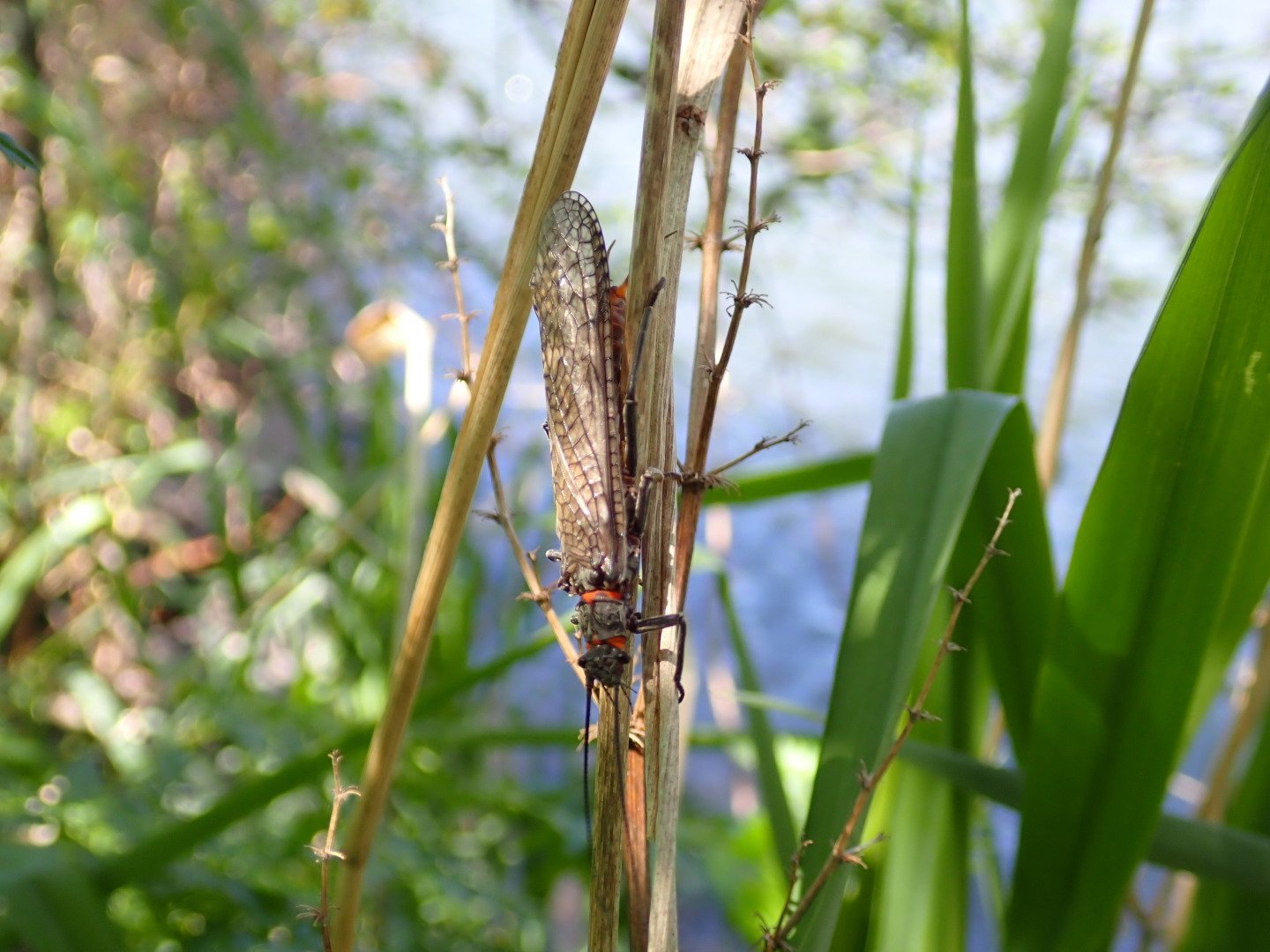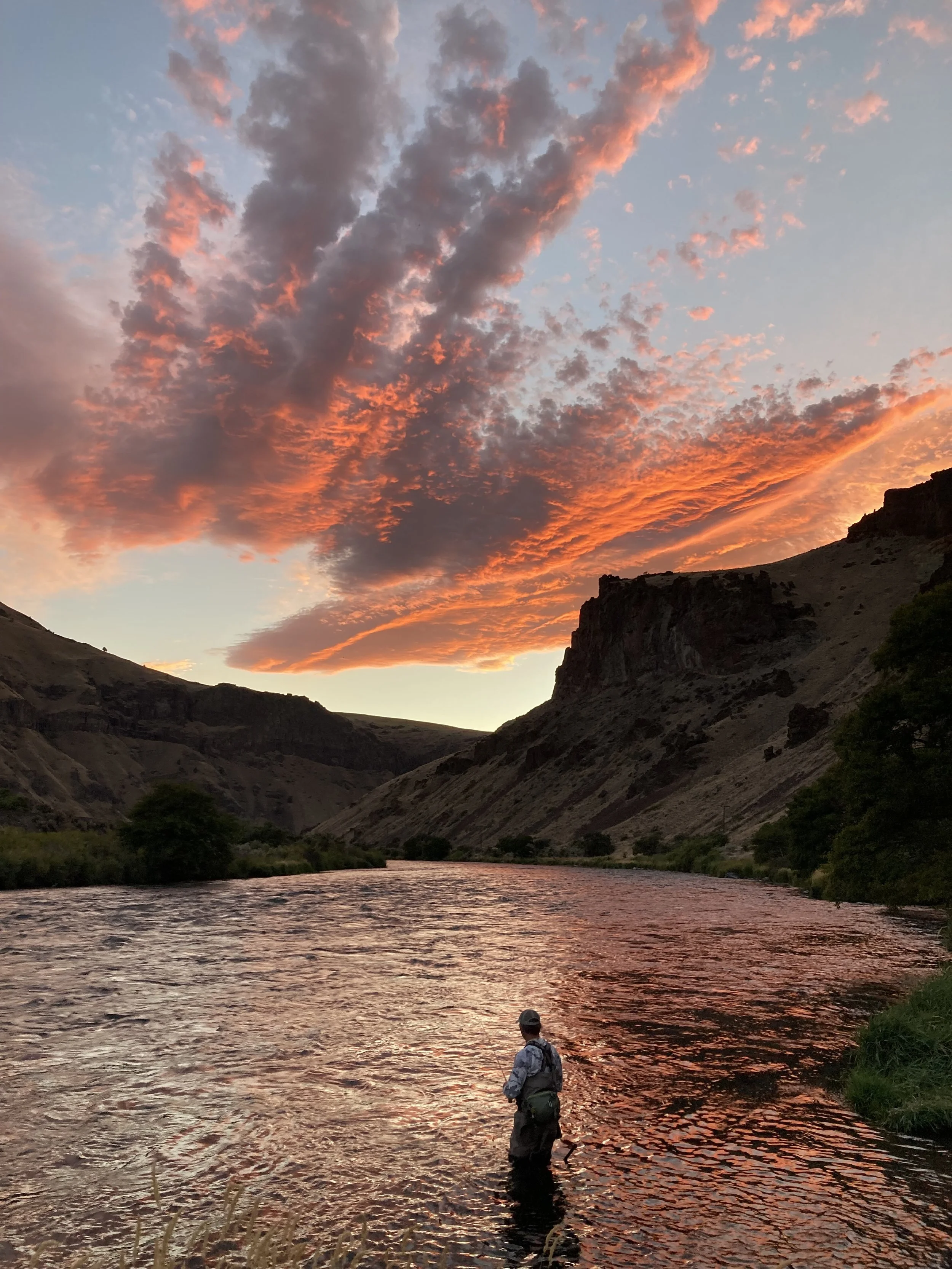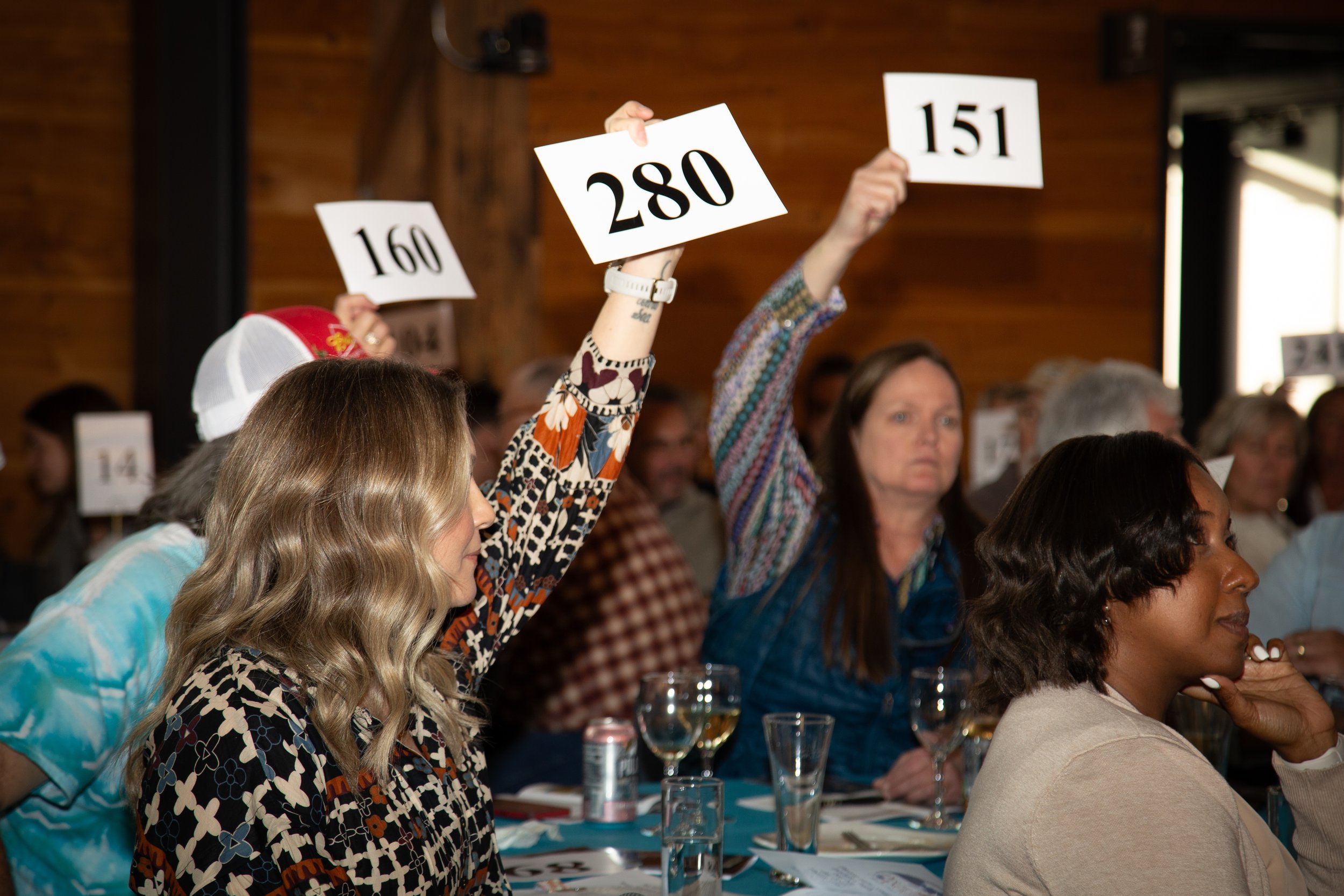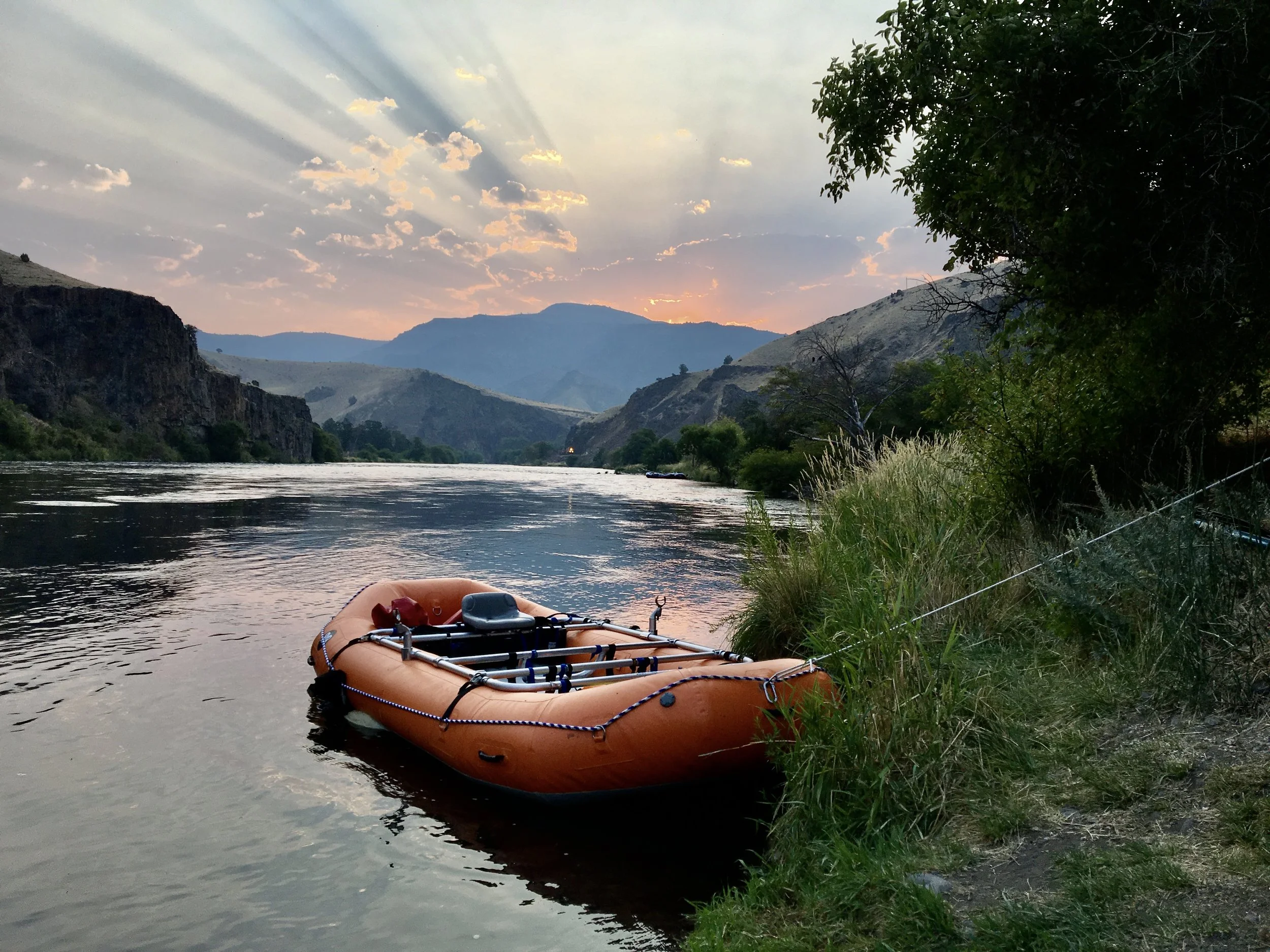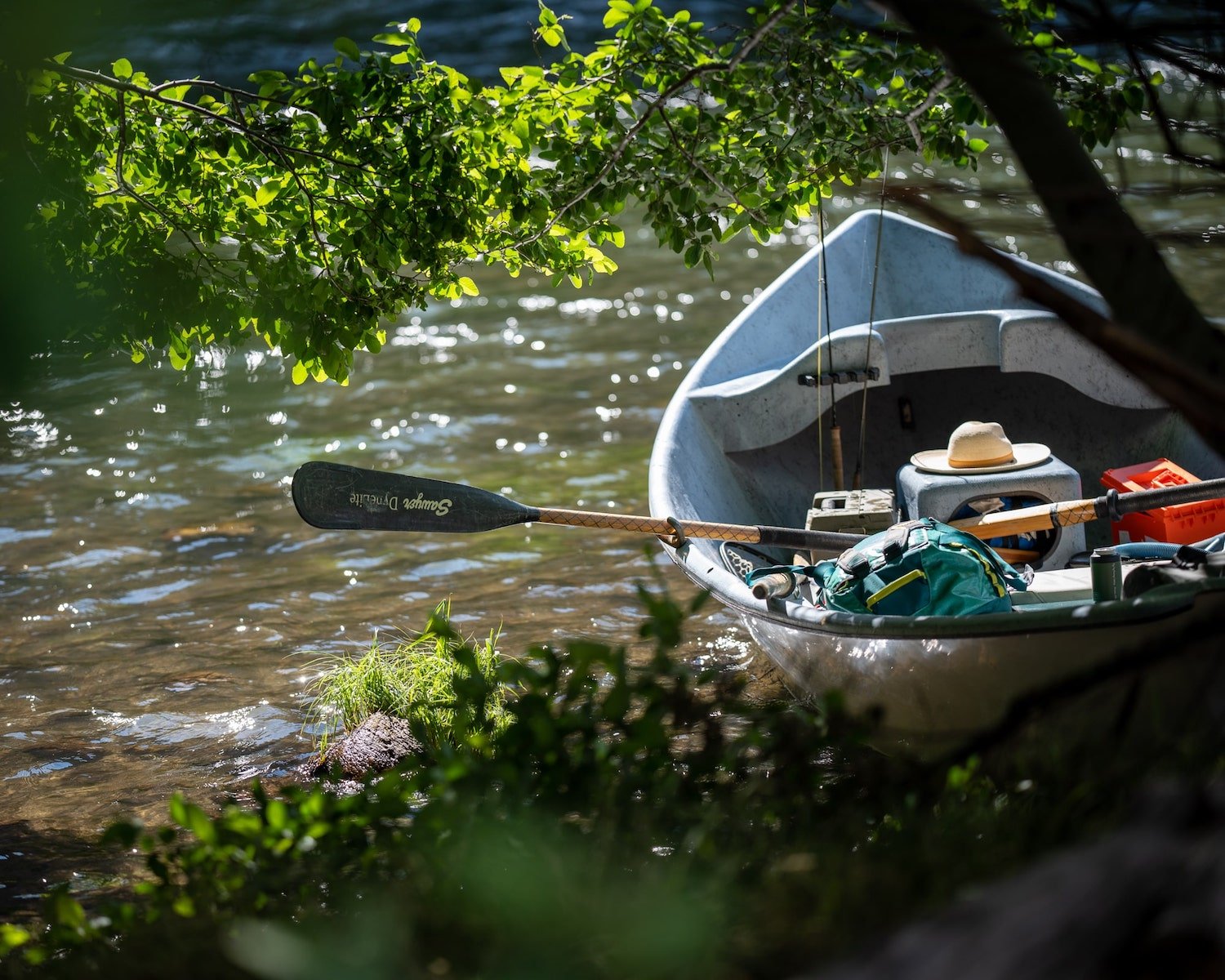It’s Game On! Salmonflies Sighted on the Lower Deschutes
Photo by Hannah Camel
Salmonfly Life Cycle
Pteronarcys californica is a mouthful to utter for most fishers not familiar with phylogeny. The creature the term describes is a delectible mouthful for hungry trout. And this week, they’re back on the fluvial menu. Salmonflies are once again flitting about on the lower Deschutes.
The largest of the stonefly family, salmonfly nymphs eek out a living for up to four years on the river bottom. They stage for emergence by crawling into the shallows and onto rocks and low riparian plants. The adults emerge and begin searching for a mate as soon as their wings are dry. Males tend to fly more sorties in search of a mate, while the females tend to be more sessile, ensconcing themselves amongst the rocks, shrubs and trees. After a match is made, the female will take flight, landing on the water to drop their fertilized egg ordnance in a move known as ovipositing. She’s quite vulnerable to feeding trout at this stage, idled by the water landing on the surface of the river. Eggs that are successfully oviposited mark the beginning of the next generation of salmonflies.
What’s in it for Trout?
Trout feast on salmonflies, because the protein boost they receive is a first big jolt after the relatively meager diet of winter and early spring. It helps power them through their own spawning season. And if you’ve ever seen trout feeding on salmonflies with such unbridled enthusiasm, it certainly looks like it might be possible they’re having a lot of fun at the feast.
How to Make More Salmonflies
Conditions for salmonflies in recent years have been a challenge. With a three to four year lifecycle, the salmonflies you see on the river today represent only the third or fourth generation of this superlative stonefly since the advent of the Selective Water Withdrawal Tower. The explosive growth of algae in the river, driven by the release of warmer, nutrient-rich surface water from Lake Billy Chinook, interrupts the transformation from nymph to flying insect. Releasing more clean, cold water from the depths of the reservoir would mean more stoneflies, including more salmonflies.
In the meantime, don’t miss this year’s display. If you need another reason to visit, the annual Maupin Daze is coming this Saturday, May 18th. And there might be a few salmonflies left for our second annual Troutfest, May 31st to June 2nd, also in Maupin.
It’s scintillating to feel one crawling on your neck, a signal it might be time to tie on your favorite imitation, dangle it in the most likely looking Deschutes riffle, and hope for a hungry redside to smash your Bullethead or Kamikaze.
Good luck!
More From The Blog
Subscribe the the DRA Newsletter
The Deschutes River Alliance is your focused voice to protect the lower Deschutes River, its cold water flows and the fish and wildlife that are sustained by them. We send regular emails with important data and news about the lower Deschutes River. We will not sell or loan your contact information to others.
How to Support the DRA
Everyone wants clean, healthy water in the Deschutes River. Oregonians cherish our clean and healthy waterways to provide drinking water, wildlife habitat and recreational activities. The lower Deschutes River is a federally designated Wild & Scenic River, and a national treasure. It must be protected for the environmental and economic health of Central Oregon. We believe by working together we can return the lower Deschutes River to full health.

